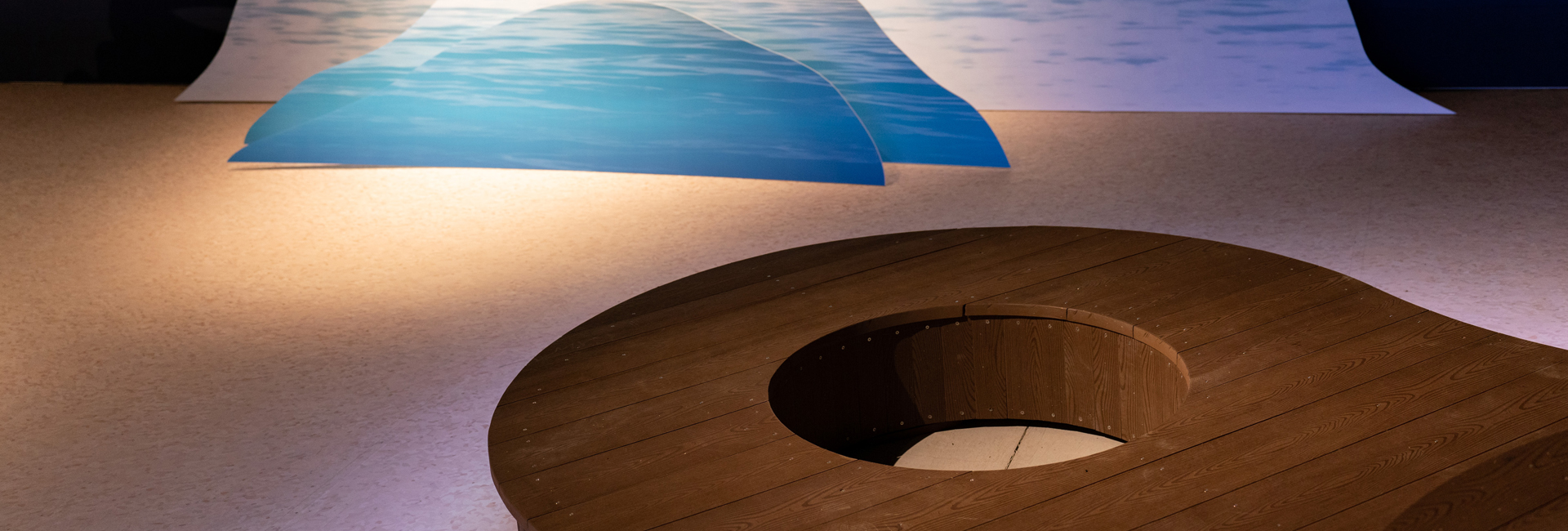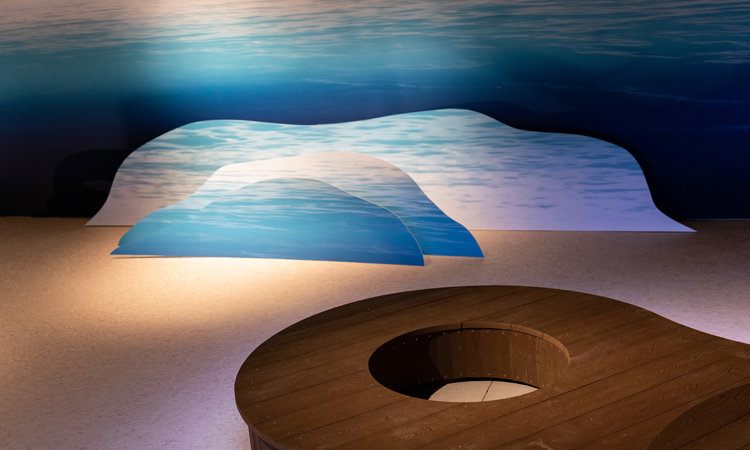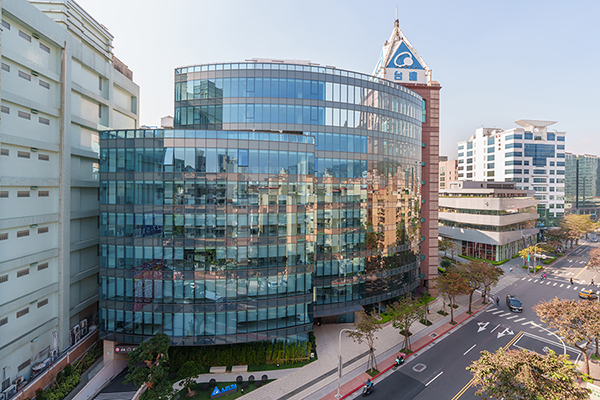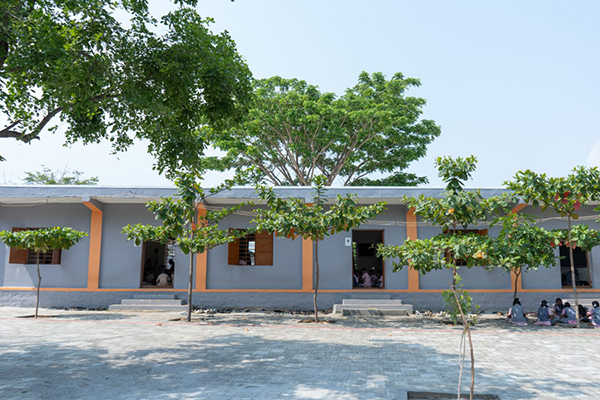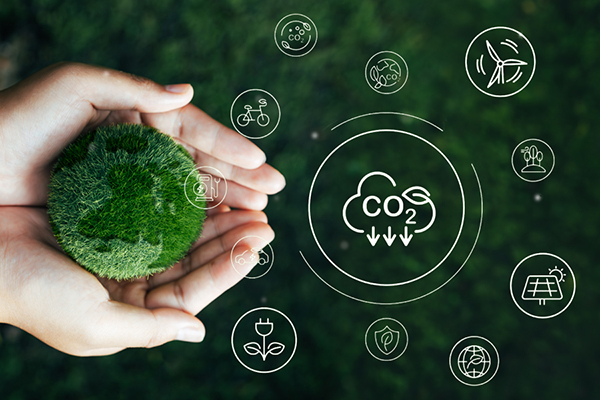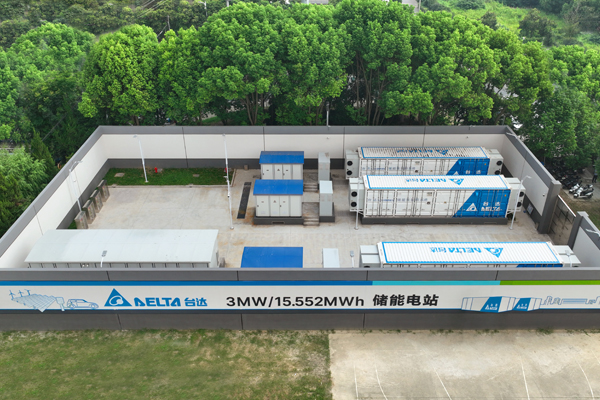The Taiwan Design Expo 2022, which debuted in Kaohsiung in October, exhibited a variety of circular economy concepts in diverse and creative forms. Sustainable Island, an installation artwork created with the wood-plastic composites manufactured from Delta’s waste PCBs in collaboration with REnato Lab, a sustainable design team, was also displayed in the themed pavilion “We Transforming”. The guests went deep into the exhibition area along a light and shadow corridor made of recycled ocean plastic fabrics and rented lamps, to enable them to review the process of transition in human lifestyles, from a countdown timer, a planet full of garbage, an attempt to change the future to the creation of a circular economy model for survival. Sustainable Island, which was five meters long and three meters wide and made of waste PCBs, was located in this space, to usher in a transformed future with everyone present.
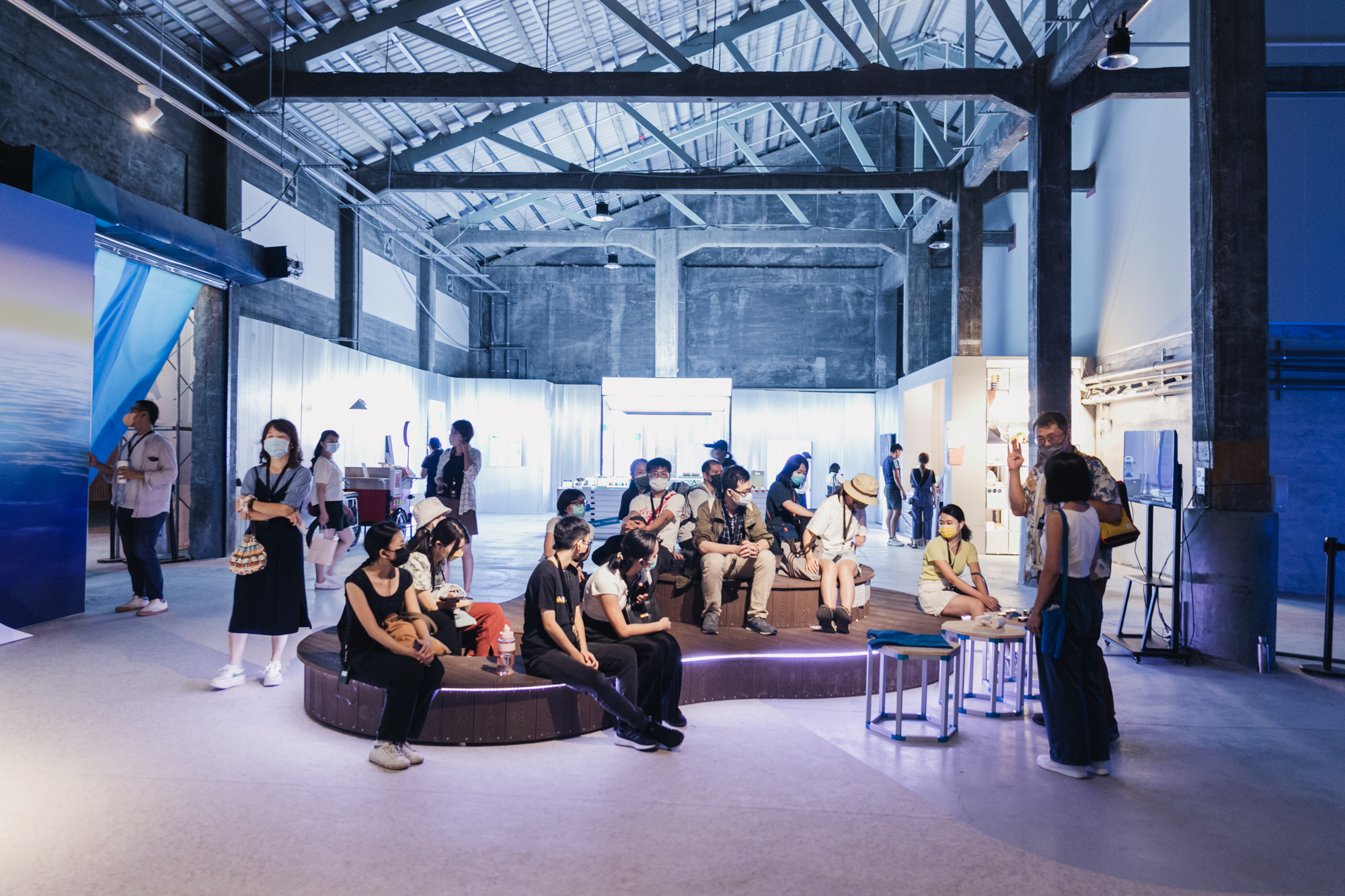
Delta worked with REnato Lab, a sustainable design team, to create an installation artwork of “Sustainable Island” made of wood-plastic composites manufactured from Delta’s waste printed circuit boards (PCBs). This artwork is unveiled at the Taiwan Design Expo 2022. (Photographer: Yan Guei-Jhen)
Recycling and use of Delta’s electronic waste to develop recycled building materials with environmental benefits In addition to conveying the circular economy concept through the artwork, the wood-plastic composites manufactured from Delta’s waste PCBs have been successfully applied to buildings, demonstrating a considerable carbon reduction effect. With Delta’s proactive endeavors, the exterior walls of the management building and the weighing room of the Taoyuan City Biomass Energy Center, which will be opened at the end of 2022, were made from such composites. About eight tons of waste PCBs were adopted to make roughly 550 square meters of recycled building materials for the exterior walls of the center, and it can reduce nearly 12 tons of carbon emissions (Note 1).
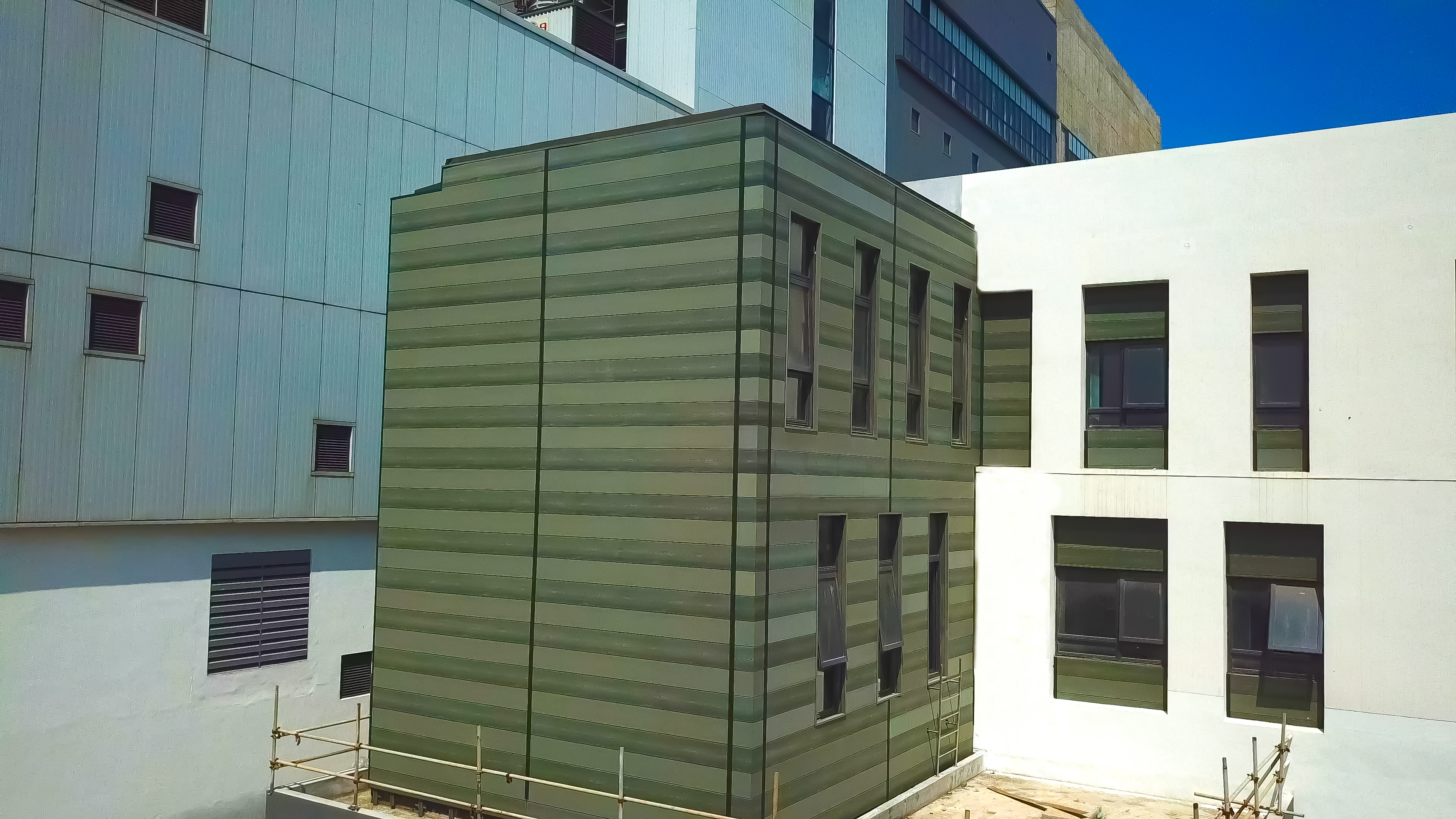 The recycled building materials developed by Delta feature corrosion and flame resistance and have been successfully applied to the exterior walls of the Taoyuan City Biomass Energy Center.
The recycled building materials developed by Delta feature corrosion and flame resistance and have been successfully applied to the exterior walls of the Taoyuan City Biomass Energy Center.
Delta’s motivation to develop recycled building materials is to fulfill and shoulder the responsibility as a producer. As Delta set the waste reduction targets in 2017, it has adopted the Zero Waste to Landfill (UL2799) system since 2019 to ensure that its plants convert waste into useful resources as much as possible. In 2020, Delta further worked with REnato Lab to use waste PCB scraps from the manufacturing process and connect all partners to form a supply chain of “venous industry”. As a producer, Delta has worked with waste management companies, recycled material design consultants, recycled building material producers, architectural designers, and builders to launch a recycled building materials demonstration and application project.
In this demonstration project, Delta developed low-value and difficult-to-reuse glass fibers, a component of waste PCBs in the electronics industry, into a raw material for making recycled building materials. Delta has cacalated the specific environmental benefits of the recycled materials: each piece of recycled building materials contained 30-50% of glass fibers from waste PCBs; with recycled plastics and wood fiber powder added, recycled materials could reach 70-90%. This has allowed Delta to significantly reduce the extraction and use of new raw materials. For every ton of recycled building materials produced, 1.47 tons of greenhouse gas emissions from processing glass fibers and extracting new raw materials can be reduced (Note 2).
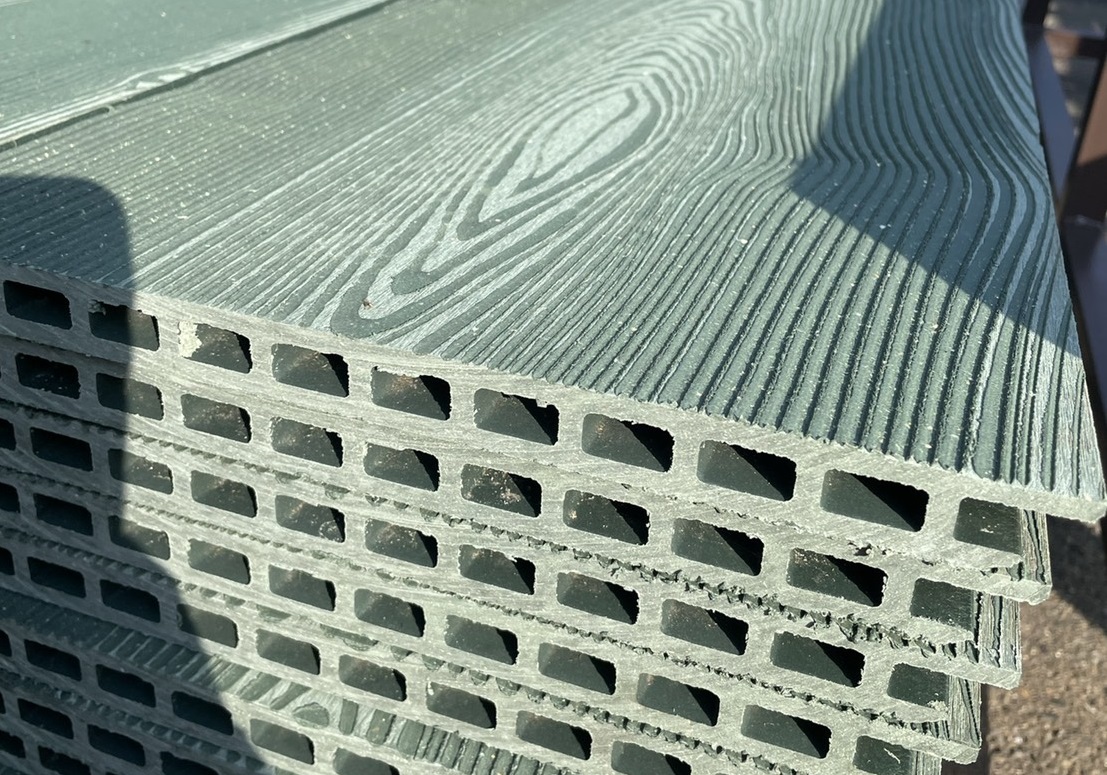 Delta’s recycled building materials have not only significantly reduced the extraction and use of new raw materials but also reduced greenhouse gas emissions from processing glass fibers and extracting new raw materials.
Delta’s recycled building materials have not only significantly reduced the extraction and use of new raw materials but also reduced greenhouse gas emissions from processing glass fibers and extracting new raw materials.
Innovative and eco-friendly recycled building materials facilitate innovation Delta has achieved the goal of recycling hazardous business waste for high-quality resources with the recycled building materials made from waste PCBs. During the process from developing the product project all the way to seeking a demonstration site, Delta has discovered that recycled building materials feature not only the same material properties as general building materials but corrosion and flame resistance, rendering it possible to be adopted for a variety of applications. For example, wooden pallets can be applied to landscaping and used as corrosion-resistant decorative exterior walls as well.
In 2022, Delta successfully applied the recycled building materials to the wooden plank trails in the green areas of Taoyuan Plants 3 and 5. The traces of Delta’s recycled building materials can also be seen in the exterior walls of the Taoyuan City Biomass Energy Center. At the end of May, Delta also adopted recycled building materials as anti-corrosion decorative walls in the Zero Carbon Community that Delta created in the exhibition area of COMPUTEX Taipei, to echo the exhibition’s theme of promoting sustainable transformation with technology. Furthermore, the widely discussed installation artwork, Sustainable Island, was moved to the lobby of Taoyuan Plant 3 at the end of October as an artwork for employees and guests to appreciate and as a demonstration of the circular economy model to inspire more innovative approaches.
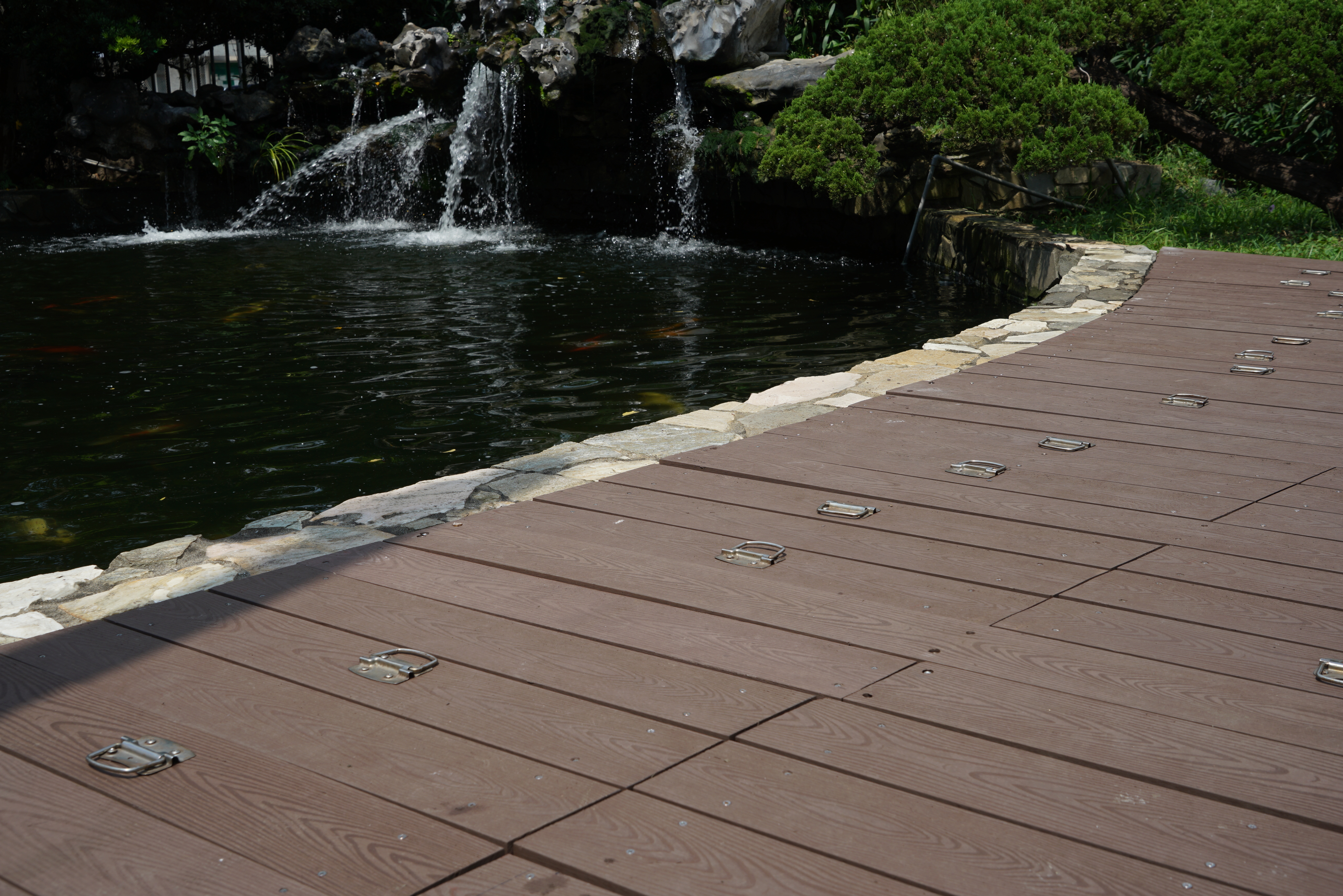 Delta has successfully applied recycled building materials to the wooden plank trails in the green areas of the plants as a demonstration of the circular economy model to inspire more innovative approaches.
Delta has successfully applied recycled building materials to the wooden plank trails in the green areas of the plants as a demonstration of the circular economy model to inspire more innovative approaches.
To put into practice the circular economy concept and shoulder the responsibility as a producer, Delta’s business units have held more than nine meetings to discuss and evaluate more than a dozen potential products and dozens of solutions as well as have established a mechanism to implement the circular economy concept and set out Delta’s strategic circular economy blueprint through workshops, internal discussions, and seminars. With the resources of internal carbon fees to support the research and development of innovative carbon reduction solutions, Delta aims to develop more circular economy projects that connect the internal organization horizontally and the external value chains vertically in the future, thereby realizing Delta’s corporate mission, “To provide innovative, clean and energy-efficient solutions for a better tomorrow,” through circular economy.
Note 1: In this project, we used eight tons of waste PCBs, about 43% of glass fiber powder (roughly 3.44 tons). The carbon reduction effect included:
1)Reduced the greenhouse gases from incineration by about 0.617 tons * 3.44 tons of glass fibers = 2.12 tons of carbon dioxide;
2)Reduced the greenhouse gases from the extraction of new raw materials by about 2.76 metric tons * 3.44 tons of glass fibers = 9.5 tons of carbon dioxide.
Note 2: For every ton of waste PCB glass fibers used to make recycled building materials, about 0.3 tons of carbon emissions that would otherwise be generated from processing glass fibers can be reduced; for every ton of recycled building materials used, about 1.17 tons of carbon emissions that would otherwise be generated from extracting new raw materials to make wood-plastic composites can be reduced.




